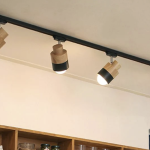

An escape room is an immersive experience that challenges participants to use their brains, wits and sense of discovery to work together to solve puzzles. These puzzles may be physical or virtual, but the overall goal is to escape from a room or series of rooms that are connected by theme and/or narrative threads. The physical and digital environment in which the puzzles take place has narratological implications, and the choice of props, technology, music, and visuals all contribute to the players’ immersion. These choices can also help to promote or detract from the participants’ sense of accomplishment when they succeed at solving a puzzle.
Room games are typically played in small groups of up to 6 players and last 60 minutes. They are often hosted by an experienced facilitator or host who guides participants through the process. Facilitators or hosts may provide participants with a written set of rules (e.g., time limit for successful completion, forbidden items), hint and scoring systems, room boundaries, handling props and furniture, health and safety issues, communication with the game master and acceptable behaviour. In addition, they may provide participants with a variety of materials to aid them in their experience, including puzzles and clues located throughout the room, pre-set hints on apps/websites or on hint cards, and in some cases, a walkie-talkie or phone to communicate with the game master and receive additional hints.
A popular example of a room game is The Room, a BAFTA award-winning, point-and-click style adventure video game developed by Fireproof Games and first released in 2005. It became known for its poorly directed and acted dialogue, looks that resemble a bad Hollywood movie, nonsense plot details and overall shittiness, which earned it the nickname “the worst game ever”.
The Room and subsequent sequels are not only an example of a room-based game, but are examples of a genre known as room games or puzzle box games. These games present the player with a number of strange puzzle boxes, which have various types of physical mechanisms in order to open and reveal another puzzle box within. The player must find ways to operate the mechanisms in the order presented in order to progress through the game.
Many of the puzzles in room games involve finding objects or clues that are not immediately obvious, but can be uncovered with careful examination of the surroundings and attention to detail. In The Room Two, for example, the protagonist finds Margaret Cox’s publicity flyer and news clipping from her phony seance in a room that was mentioned during The Seance. Similarly, in The Room Three, the protagonist finds a box that the Craftsman entrapped her in at the Imprisoned ending that looks very similar to the one he gave her at the start of the game. These call-backs and references are a way for the player to connect the rooms with each other and with the mysterious entity known as the Null, which is behind all of these events.




